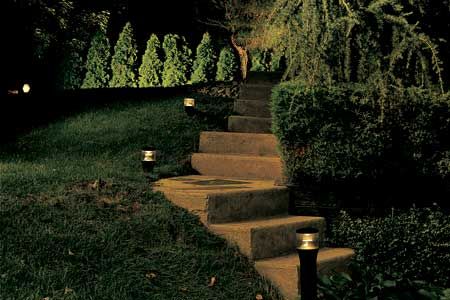When installed correctly, outdoor lighting improves your home’s safety and security while contributing to its curb appeal. Many homeowners make common mistakes, such as poor illumination, incorrect voltage, and excessive brightness, that make their lighting ineffective. This article will walk you through how to choose and set up the perfect outdoor lighting system based on your needs and key factors you may not have considered.
Front Door Lighting
Front door lighting serves as a beacon for visitors, prevents accidents on steps, aids in locating keyholes and doorbells, and helps identify visitors who come to the door. For the best entrance lighting:
- Install two line-voltage (120V) lanterns on either side of the door, using low-wattage bulbs to minimize glare.
- Choose 40 watt (W) incandescent lamps or 15W compact fluorescent bulbs for energy efficiency.
- Pick lanterns with frosted or colored lenses to reduce eye strain.
- Cut-glass fixtures with incandescent lamps give a sparkling, decorative effect.
- Mount wall lanterns along the upper third of the front door for proper proportions.
When selecting fixture size, use a shoebox as a reference point to figure out the right dimensions. These fixtures will be visible from a distance, so choose the right amount of lighting so that your setup is balanced. Go with fixtures that complement your home’s architectural style for a professional look.
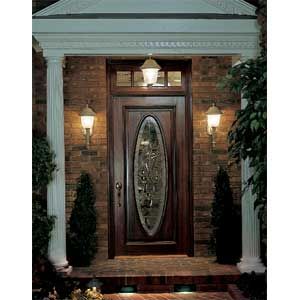
Driveway and Garage Lighting
Follow these tips to effectively light your driveway and garage for better visibility and safety:
- Install a 7- or 8-foot-tall post lantern at the driveway entrance to help visitors or emergency services locate your home.
- Use low-voltage spread lights along the driveway edges to define its boundaries.
- For wooded driveways, mount downlights in trees, focusing on the roadbed’s edge.
- Stagger shielded path lights to avoid a runway-like appearance.
- Install wall-mounted floodlights with 20–100W bulbs or compact fluorescents for increased illumination when needed.
- Install motion sensors to conserve energy and enhance security.
When lighting long, straight driveways, put the lights about a foot from the edge on one or both sides. Incorporate timers and smart lighting systems for better control and more energy-efficient lighting.
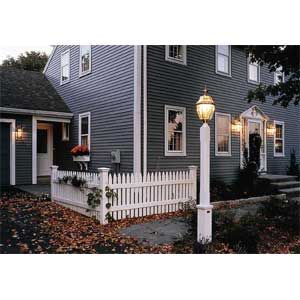
Walkway and Step Lighting
Here’s how to use lighting to keep your walkways safe, properly lit, and accident-free:
- Use low-voltage fixtures to create even, overlapping pools of light along pathways and steps.
- Choose from various fixture types, such as bollard lights, mushroom lights, and shaded tier lights.
- Opt for fixtures with concealed light sources that shine downward, eliminating glare.
- Use lamps ranging from 4–20W, depending on the desired brightness.
- Fixtures with photocells or dusk sensors operate automatically.
- Explore flush-mounted fixtures with tough plastic lenses for easy lawn maintenance.
Solar-powered options can offer an eco-friendly solution by harnessing sunlight for nighttime lighting without paying for electricity.
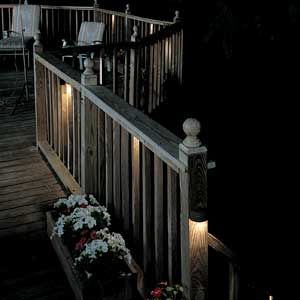
Deck and Patio Lighting
Outdoor living areas showcase your creativity with lighting design. These suggestions create a functional and inviting atmosphere:
- Install permanent fixtures for task lighting and safety concerns, such as near grills or stairs.
- Use low- or line-voltage floodlights for specific areas requiring bright illumination.
- Incorporate decorative elements such as strip or rope lights to outline benches and stair risers.
- If you have pest problems, look for insect-deterrent lighting options, such as GE’s Energy Star-certified compact fluorescent bug bulb.
- Utilize dimmers to adjust light levels throughout the evening.
- Balance permanent lighting with temporary decorative options such as candles and hurricane lamps for a festive atmosphere.
Avoid overlighting these areas, as it can detract from the ambiance and attract unwanted insects. Use weather-resistant fixtures for durability and long-lasting performance, especially in areas directly exposed to the elements.
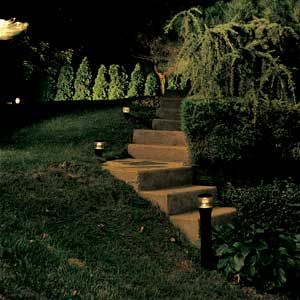
Landscape Lighting
Use these and other techniques to show off your innovative landscaping and lush garden at night while warding off potential intruders:
- Select a primary focal point, such as a prominent tree or garden structure, and a couple of secondary areas of emphasis.
- Use floodlights attached to in-ground poles or hung from elevated locations to illuminate larger features.
- Install recessed well lights with swivel heads to highlight specific objects or areas.
- Use tier-, mushroom-, and tulip-shaped shaded fixtures for flower beds, ground cover, statuary, and stone walls.
- Create a moonlight effect by mounting shielded bullet fixtures in taller trees to shine down on shorter trees or shrubs.
- Experiment with backlighting by placing light sources between featured objects and walls.
Combining low-voltage lighting with accent lighting allows you to create a captivating nighttime landscape that doubles as part of your home security system.
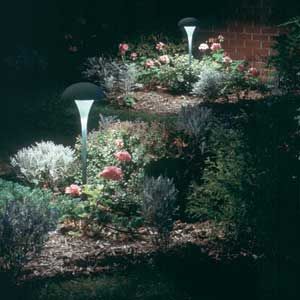
Outdoor Lighting Maintenance Tips
To keep your outdoor lighting fixtures in top condition, follow these maintenance guidelines:
- Clean fixtures periodically to reduce calcium deposits from water exposure. Use a household cleaner formulated to remove lime for heavy deposits.
- Lubricate threads with an anti-oxidizing, anti-seize lubricant such as Permatex.
- Apply a high-heat silicone compound to sockets and lamp bases to prevent metal corrosion.
- Regularly check fixture mounts for security and potential damage to trees or landscape features. Address these issues immediately to avoid expensive repairs or replacements.
- Make sure your landscaping and vegetation are not obstructing fixtures or blocking light. Trim plants or relocate fixtures as needed to maintain optimal lighting coverage. Adjust your lighting system as needed as your vegetation or landscaping shifts.
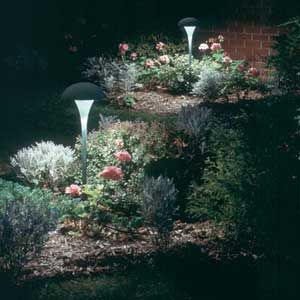
Making Sense of Systems, Fixtures, and Lamps for Outdoor Lighting
Here’s an overview of the key components of outdoor lighting to help you design an effective system for your property.
Power Systems
Make sure you use a power system rated for your needs. Consult with a professional if you have questions about which system would be best for your lights.
- Line voltage (120V): Standard household voltage requires professional installation for new circuits.
- Low voltage (12V): This system uses a step-down transformer plugged into an outdoor receptacle and converts line voltage to low voltage, making it safer and easier to install yourself.
You can also use a combination of the two systems. If you need to add a new line-voltage circuit for the lighting, hire an electrician to make the connections or at least have one check your work. Systems run on specially insulated distribution cables that you can tuck into the ground and easily move your landscape or lighting changes.
Fixtures
Lighting fixtures can be found at home centers, specialty stores, and online. Standard line-voltage fixtures are usually sold individually. You can buy low-voltage kits that include the transformer, fixtures, and cable together or purchase items separately.
Lamps
For line-voltage systems, many manufacturers offer fixtures that accept metal-halide or mercury-vapor lamps. These two lamp types put out more lumens per watt than any low-voltage lamps.
- Low-voltage lamps: Three times brighter than line-voltage incandescent lamps, with longer lifespans
- Metal-halide and mercury-vapor lamps: Offer high lumen output per watt, suitable for line-voltage systems
- LED options: Increasingly popular for their energy efficiency and long lifespan
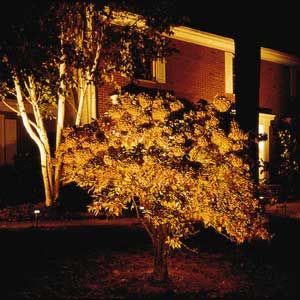
When designing your outdoor lighting system, consider factors such as voltage drop in low-voltage systems and choose the appropriate combination of fixtures and lamps to get your desired lighting effects. Energy-efficient solutions such as LED fixtures also help reduce your energy costs and environmental impact.
